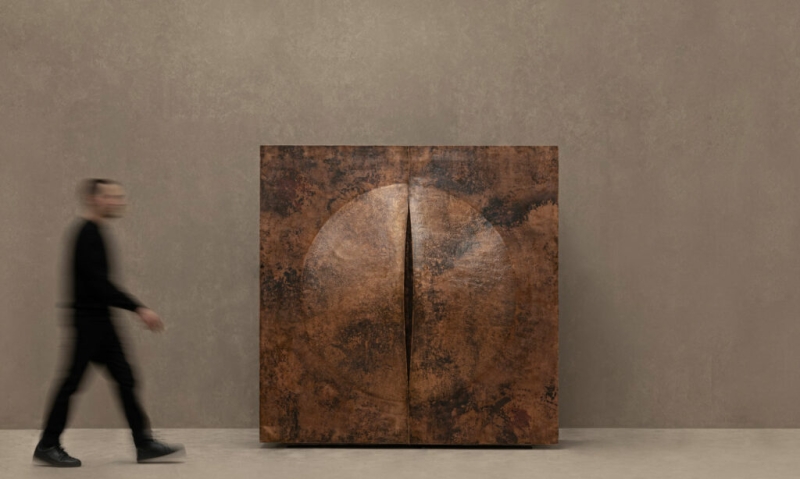Manu Bañó’s OBJ-10 CABINET is a monolithic volume, with two symmetrical doors hammered at the center to form a handle that resembles a reptile eye.
Dubai, best recognized for its futuristic cityscape, becomes the stage for an exhibition that finds its roots in the centuries-old metallurgy traditions of Mexico. Through a symphony of bronze, copper, and brass, “Unearthing: The Alchemy of Mexican Metalwork,” an exhibit by Gallery Collectional, tells a transcendental story of the material as a universal language—connecting time and culture—through contemporary expressions.
Designers Héctor Esrawe and Manu Bañó, and their collective practice EWE Studio, debut a series of furniture objects exemplifying their distinct yet converging approaches to research, craftsmanship, and experimentation. Bañó has created four pieces in collaboration with artisans from a small Mexican village steeped in a long tradition of goldsmithing heritage. The duality of precision and spontaneity present in his OBJ-06 Coffee Table reflects his appreciation for material integrity while embracing the marks left by fire and hand. Domed, hammered surfaces emerge from just two sheets of copper, transforming them into both a functional object and an artifact. The OBJ-10 Cabinet takes this technique further in what the designer calls his most complex work yet, featuring two gentle undulations that protrude from a large monolithic volume. An almost reptilian slit cuts through, while raw, textured finishes juxtapose the mirror-polished surfaces within.
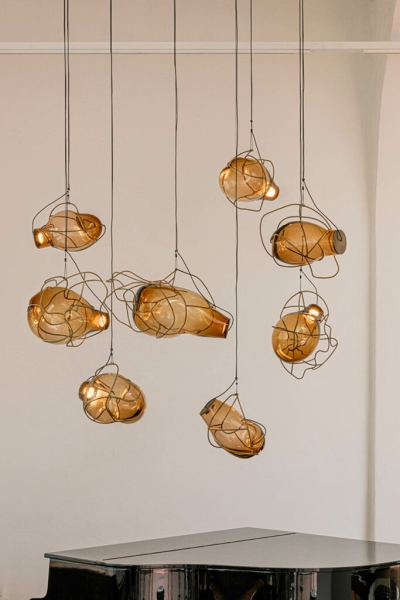
Sculptural and artisanal, the Nebula lightingfixtures by EWE Studio evoke cosmic origins and cloud-like forms.
In contrast to Bañó’s intuitive approach, where he often works without reference points or even measurements, Esrawe pursues precision and intent. Across his Gear Desk—a bronze replica of a to-scale paper model—layers of cast polished metal echo the intricate ridges of honeycomb-shaped cardboard. His Frecuencia chairs, meanwhile, exude a more deliberate rhythmic resonance. Crafted from bent steel bars, their repeated forms and subtle variations convey a soft optical vibration that catches the sunlight and casts intricate shadows across Gallery Collectional.
Esrawe’s penchant for ornamentation intertwines with Bano’s minimalist ethos in EWE Studio’s Nebula Lighting Sculpture, a piece that captures the tension between rigidity and fluidity, structure and motion. These luminaires evoke cosmic origins, made from a caged glass technique where molten glass expands within brass frames to create organic, cloud-like forms.In the Táas Cabinet, a stepped sequence of uniquely shaped brass panels reveals and conceals in turn, with each dimension influencing the nex
Throughout the exhibition, on view until December 12 at Eden House, Al Satwa, the designers dig into the cultural roots of their muse—Mexican metalwork—to chart the evolution of the craft.Their works combine research-driven testing with organic explorations, drawing inspiration from Mexican stories, traditions, and vernaculars. Both share a mutual appreciation for the inherent beauty of metal and the labor and artistry behind each creation. This focus extends across various dimensions of the exhibition, where the production process is immortalized both in the textures of the works and in an accompanying olfactory element and soundscape that captures the atmosphere of the workshops.
Explore Works On Display In ‘Unearthing: The Alchemy of Mexican Metalwork’
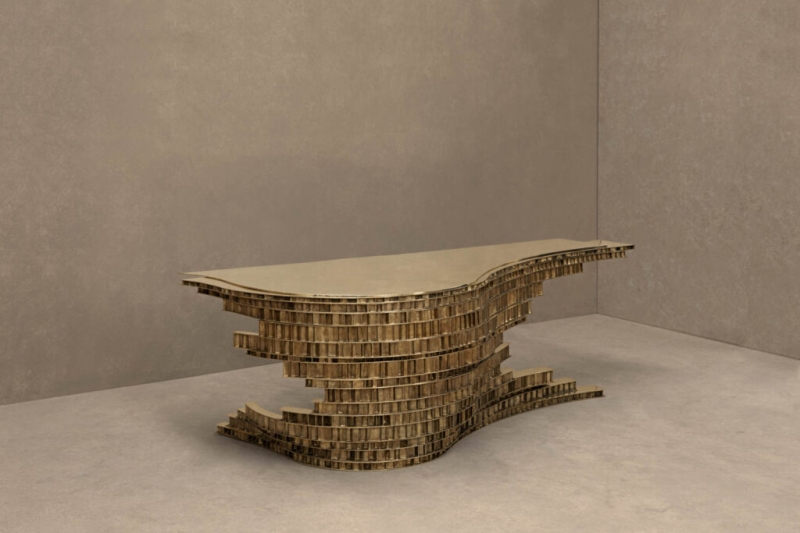
Gear Desk by Héctor Esrawe casts in bronze the aleatory patterns of honeycomb-shaped cardboard edges.
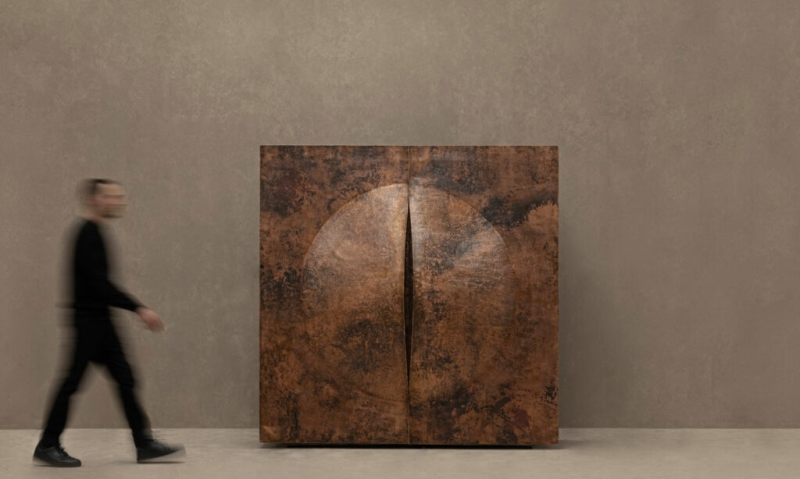
Manu Bañó’s OBJ-10 Cabinet is a monolithic volume, with two symmetrical doors hammered at the center to form a handle that resembles a reptile eye.
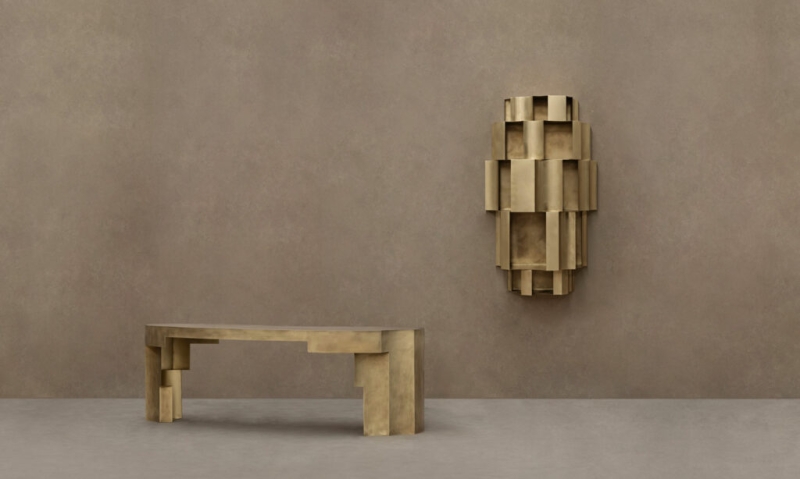
A stepped sequence of brass panels shapes EWE Studio’s Táas Cabinet and Desk.
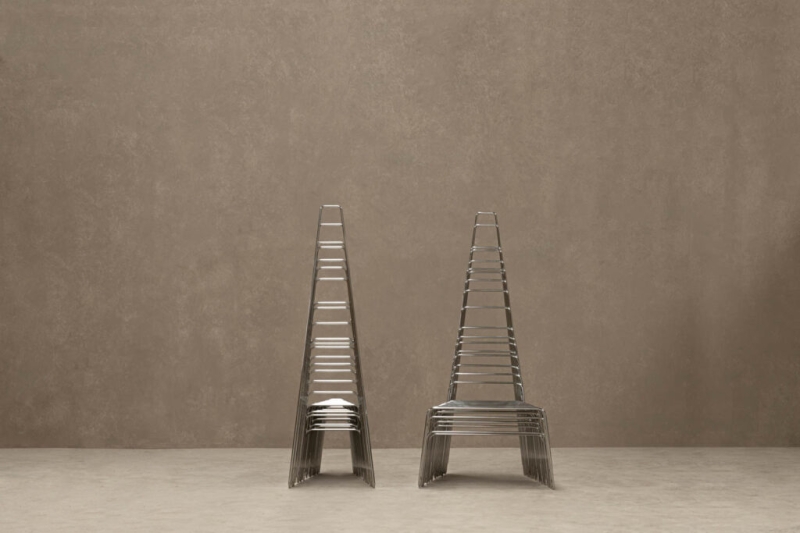
The steel bars of the Frecuencia Chairs by Héctor Esrawe exude a rhythmic resonance.

